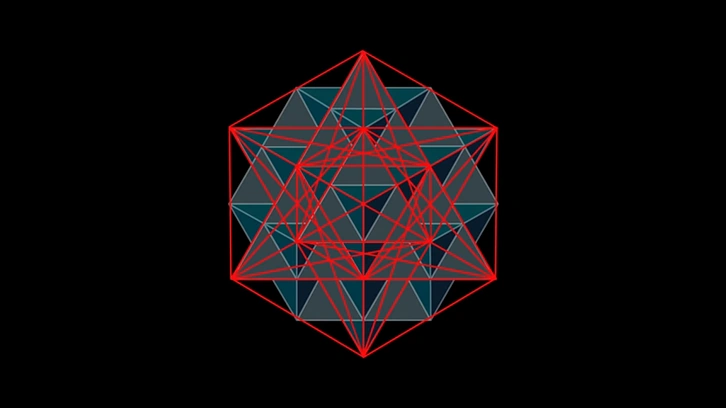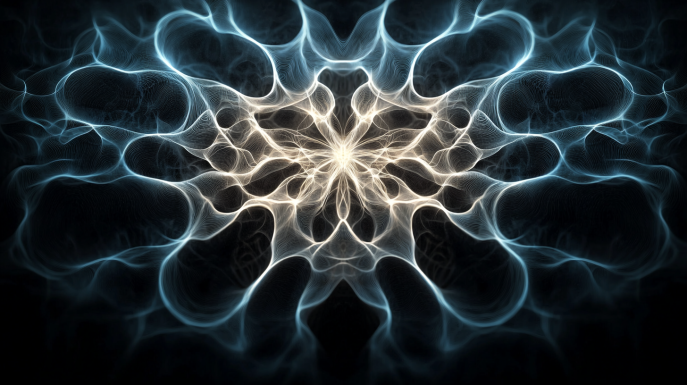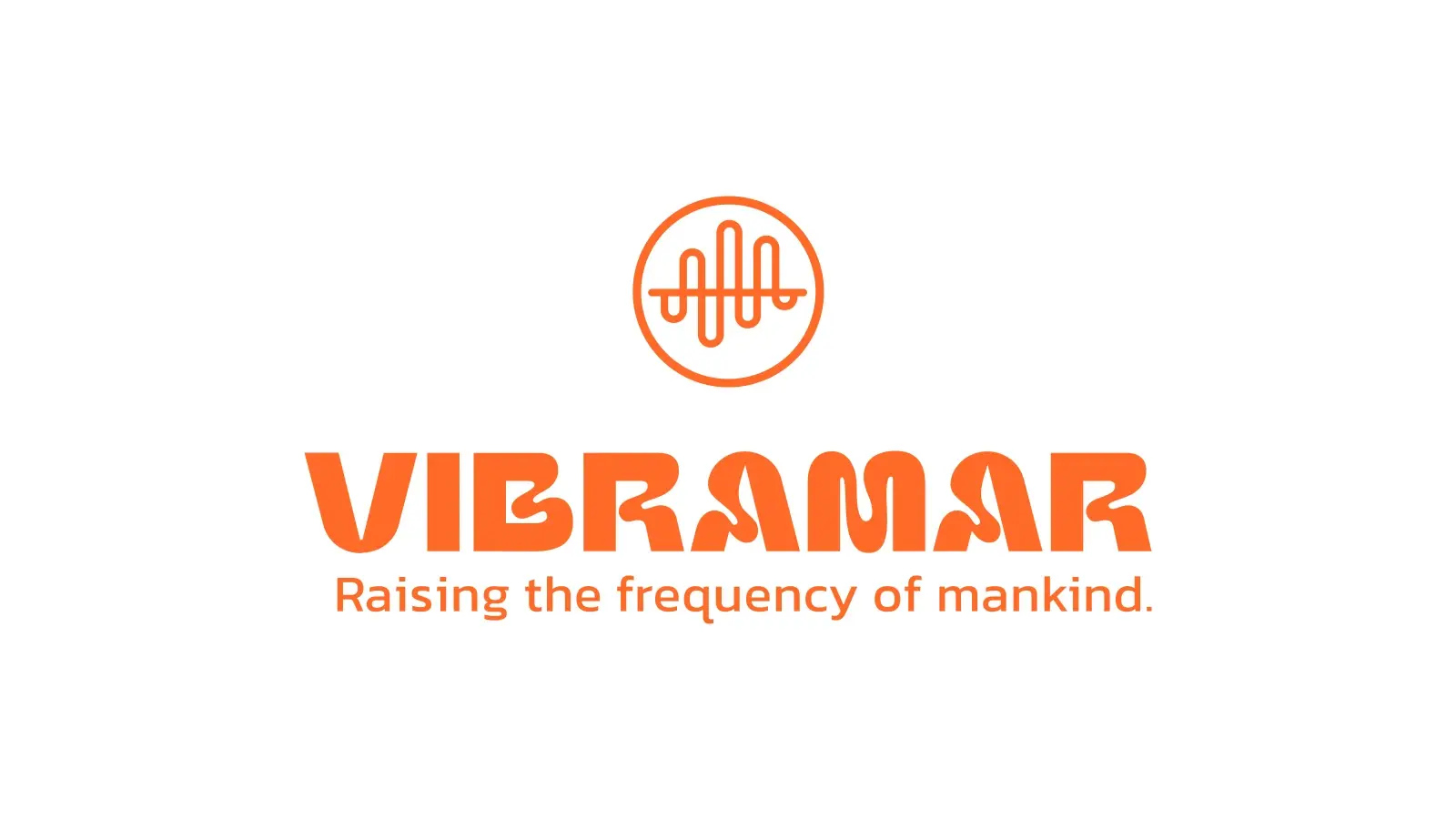Quantum Biology and the Understanding of the Human Biofield
The concept of the human bioenergetic system, “a field of energy” that surrounds and permeates the body, has long been a topic of interest due to its implications for biofield energy in various healing traditions and complementary medicine practices. In recent years, the emerging field of quantum biophysics has begun to shed new light on the quantum level nature of the biofield, suggesting that quantum phenomena and quantum-mechanical principles may play a significant role in its functioning. This article advances our understanding of the human biofield by exploring the intersection of quantum science and biofield studies, examining the evidence for quantum processes and biofield interactions in living systems and the implications for our understanding of the human biofield.

Quantum Biophysics: Bridging Quantum Physics and Biology
Quantum biophysics is a rapidly evolving field that seeks to apply the principles of quantum mechanics to biological systems. While quantum theory has traditionally been associated with subatomic particles, quantum effects may also manifest in and microscopic systems, recent research has shown that quantum effects can also manifest in the complex, macroscopic systems found in living organisms.
Some of the most striking examples of quantum biophysics include the remarkable efficiency of photosynthetic systems, the navigation abilities of migratory birds using Earth’s magnetic field, and the quantum-mechanical nature of olfactory reception. These findings suggest that quantum effects in biology may be more widespread than previously thought, and that the function of quantum mechanics laws may significantly influence living systems.
Beyond the biofield, quantum physics plays a crucial role in various biological systems through phenomena such as tunneling and decoherence. For instance, quantum tunneling is observed in the mutations of DNA, where protons tunnel through DNA bases, significantly affecting the genetic information during replication. Similarly, quantum decoherence, the loss of quantum coherence, helps explain the mechanisms behind olfactory reception, where scent molecules trigger specific quantum pathways. These examples demonstrate the pervasive influence of quantum physics across the entire field of biology, underscoring its fundamental role in the life sciences.
Quantum Mechanical and Quantum Coherent Effects in the Biofield
One of the key concepts in quantum biophysics is quantum entanglement, which refers to the ability of quantum systems to maintain a coherent superposition of states over time. Researchers have proposed quantum entanglement as a potential mechanism for the efficient transfer of energy and information within and between cells in biological systems.
In addition to quantum entanglement, the biofield is also thought to exhibit quantum coherent effects. Quantum coherence in biological systems implies that quantum states, such as the excitation of electrons or the alignment of spins, can exhibit phase relationships that are preserved over time and space, leading to phenomena such as synchronized oscillations at the molecular level. This coherence could underpin many of the biofield’s reported healing and regulatory functions, allowing for a concerted transfer of informational states across the body’s cellular matrix.
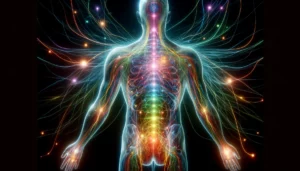
The Role of Quantum Mechanics in the Human Biofield
Studies have demonstrated that certain bacteria and algae’s photosynthetic systems can achieve near-perfect efficiency in capturing and transferring light energy, a feat that classical physics alone cannot explain. Researchers have suggested that this remarkable efficiency may be due to the presence of quantum entanglement in the photosynthetic apparatus, allowing for the rapid and lossless transfer of energy across the system.
Similarly, some researchers have proposed that quantum entanglement may play a role in the functioning of the human biofield, allowing for the coherent transfer of energy and information throughout the body. While evidence of quantum involvement is still limited, it represents an intriguing area of inquiry that merits further investigation.
Quantum Effects in the Human Biofield
People often describe the human biofield as a complex, subtle energy field that encompasses the physical, emotional, and spiritual aspects of an individual. Researchers continue to debate the existence of the biofield and its exact nature, suggesting that quantum phenomena and quantum-mechanical principles may influence it.
One line of evidence for the quantum nature of the biofield comes from studies of biophoton emission, the ultra-weak light emitted by living cells. Studies have demonstrated that biophotons display quantum properties like entanglement and coherence, implying their potential involvement in quantum communication and information processing within the body.
Other researchers have proposed that the biofield may be a manifestation of the quantum vacuum, the fundamental energy field that underlies all of reality. According to this view, the biofield may represent a localized perturbation of the quantum vacuum, influenced by the thoughts, emotions, and intentions of the individual.
Additionally, the interaction between the quantum vacuum and electromagnetic fields within the biofield is a burgeoning area of study that explores how these fundamental forces coexist and interact within living organisms. Magnetic field effects from electromagnetic fields produced by cellular activities may interact with the quantum vacuum to influence biofield properties, potentially affecting healing processes and cellular communication. This interaction could provide a mechanism by which the biofield influences physical health and emotional states, offering a quantum-based explanation for phenomena such as the therapeutic effects of energy healing and other alternative medical practices.
While these ideas remain speculative, they highlight the potential for quantum phenomena to shape our understanding of the human biofield and its role in health and well-being.
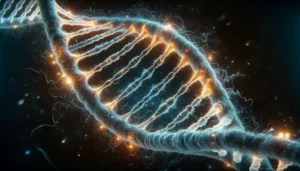
The Future of Quantum Biofield Research
As the field of quantum biophysics continues to evolve, it is likely that our understanding of the human biofield will also deepen. Researchers are already exploring the potential applications of quantum science to biofield studies, including the development of new diagnostic and therapeutic tools based on quantum principles.
One area of particular interest is the use of quantum sensors and imaging technologies to detect and measure the biofield. For example, some researchers have proposed using quantum magnetometers to map the magnetic field component of the biofield, potentially providing new insights into its structure and function.
Other researchers are investigating the role in quantum information processing and quantum computing to analyze and model the biofield’s complex dynamics. By harnessing the power of quantum algorithms and machine learning, it may be possible to develop more sophisticated models of the biofield and its interactions with the body and environment.
Ultimately, the future of quantum biofield research will depend on the development of quantum technologies and continued collaboration between researchers from diverse fields, including quantum physics, biology, medicine, and complementary and alternative medicine. By bringing together these different perspectives and expertise, we may be able to unlock new insights into the quantum nature of life and the role of the biofield in human health and well-being.
Quantum Vacuum and the Biofield
The quantum vacuum is a fundamental concept in quantum physics, representing the lowest energy state of a quantum field. According to quantum field theory, the vacuum is not empty but rather a seething sea of virtual particles that constantly pop in and out of existence.
Some researchers have suggested that the biofield may be a manifestation of the quantum void, representing a localized perturbation of this fundamental energy field. Studies support this idea by demonstrating the interaction and influence of living systems on the quantum vacuum, exemplified by the Casimir effect, which creates an attractive force between two uncharged metal plates in a vacuum due to vacuum energy fluctuations.
If the biofield is indeed a manifestation of the quantum void, it may help to explain some of its reported properties, such as its ability to convey information and influence biological processes at a distance. However, to fully understand the relationship between the quantum void and the biofield and to develop experimental methods for testing this hypothesis, more research is necessary.
Quantum Superposition and the Biofield
Another intriguing area of quantum biofield research involves the phenomenon of quantum superposition, where two or more quantum states can exist simultaneously until a measurement is made. Quantum mechanics, approaching the standard quantum limit, has demonstrated superposition in a variety of experimental settings, including photons, atoms, and larger molecules.
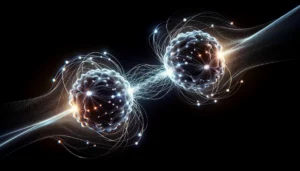
Researchers have proposed that quantum superposition could contribute to the biofield’s functioning by enabling the existence of multiple potential states or configurations of the field until they observe or measure a specific outcome. Studies support this idea by demonstrating that living systems can display superposition-like behavior, like photosynthetic organisms that can simultaneously explore multiple energy pathways before settling on the most efficient one.
However, there is ongoing debate about the extent of quantum superposition’s operation in biological systems, and further research is necessary to ascertain its significant role in the biofield. One challenge is that quantum superposition is typically very fragile and easily disrupted by environmental noise and decoherence, making it difficult to maintain in the complex, warm, and wet environments found in living organisms.
Despite these challenges, the study of quantum superposition in biological systems represents an exciting frontier in quantum biofield research, with the potential to shed new light on the nature of the biofield and its role in human health and well-being.
The Role of Quantum Measurements in Biofield Research
The issue of quantum measurements is one of the key challenges in studying the quantum nature of the biofield. In quantum physics, the act of measuring a quantum system can have a profound effect on its behavior, causing it to collapse from a superposition of states into a single definite state.
This raises important questions in biofield research about how we can study the quantum aspects of the biofield without disrupting its natural functioning. Some researchers have proposed using non-invasive quantum measurement techniques, such as quantum sensors or quantum imaging, to study the biofield without collapsing its quantum states.
Other researchers have suggested that the biofield may be a type of “open quantum system,” which can maintain its quantum coherence even in the presence of environmental noise and decoherence. Studies support this idea by demonstrating that certain biological systems, like the photosynthetic apparatus of plants, can sustain quantum coherence over surprisingly extended periods.
Ultimately, the development of new quantum technologies and measurement techniques will be crucial for advancing our understanding of the quantum nature of the biofield and its potential applications in health and medicine.
The Interaction between Quantum and Classical Physics in the Biofield
In recent years, the exploration of quantum phenomena in biology has garnered significant attention. However, we must acknowledge that a complex interplay between quantum and classical physics likely influences the biofield. In other words, quantum mechanics may not solely determine the behavior of the biofield, but it may also involve classical electromagnetic fields, biochemical processes, and other non-quantum factors.
For example, some researchers have proposed that the biofield may be a type of “quantum biological electron transfer” system, involving the coherent transfer of electrons through complex protein networks in the body. The structure and function of the involved proteins, the pH and temperature of the cellular environment, and the presence of other molecules and ions are likely to influence this process, which may involve quantum effects at the subatomic level.
Similarly, the body’s tissues and organs, such as the heart and brain, generate classical electromagnetic fields that can influence the biofield. Classical techniques like electrocardiography (ECG) and electroencephalography (EEG) have measured these fields, demonstrating their significant effects on physiological processes and behavior.
Understanding the interplay between quantum and classical physics in the biofield will require a multidisciplinary approach that combines insights from quantum mechanics, classical physics, biology, and medicine. By exploring this complex interplay, researchers may be able to develop a more comprehensive and nuanced understanding of the biofield and its role in human health and well-being.
Quantum Mechanical and Quantum Coherent Effects in the Biofield
Recent advances in quantum biology and quantum chemistry have provided new insights into the possible role of quantum mechanical effects in the biofield’s functioning. Quantum physics provides a framework for understanding the behavior of matter and energy at the subatomic level, and researchers are beginning to explore how these quantum effects may manifest in biological systems.

One area of particular interest is the concept of quantum coherence, which refers to the ability of quantum systems to maintain a coherent superposition of states over time. Some researchers have suggested that the phenomenon of quantum coherence may explain the biofield’s behavior, allowing for the rapid and efficient transfer of energy and information throughout the body.
Another potential quantum effect in the biofield is quantum entanglement, where two or more particles become correlated in such a way that their properties remain linked even when separated by vast distances. Some researchers have proposed that quantum entanglement may play a role in the biofield’s ability to facilitate healing and communication between different parts of the body.
While the evidence for quantum mechanical effects in the biofield is still emerging, these ideas represent an exciting new frontier in our understanding of the human biofield and its role in health and well-being.
The Future of Quantum Biology and Biofield Research
As the role of quantum biology in our understanding of the biofield continues to evolve, it is likely that we will see a wide range of new developments and applications in the field of quantum biology. From new diagnostic and therapeutic tools based on quantum technologies to a deeper understanding of quantum effects in biological systems, the future of quantum biology is full of exciting possibilities.

The development of new quantum-based technologies for studying and manipulating the biofield is one area of particular interest. For example, researchers are exploring the use of quantum sensors and imaging techniques to visualize the biofield in real-time, potentially providing new insights into its structure and function.
Other researchers are investigating the potential of quantum computing and quantum information processing to analyze and model the biofield’s complex dynamics. By harnessing the power of quantum algorithms and machine learning, it may be possible to develop more accurate and predictive models of the biofield and its role in health and disease.
Ultimately, the future of quantum biology and biofield research will depend on a collaborative and multidisciplinary approach, bringing together researchers from fields as diverse as physics, chemistry, biology, medicine, and computer science. Working together to unravel the mysteries of the quantum world and its role in the living organism, we may be able to unlock new frontiers in our understanding of life, consciousness, and the nature of reality itself.
Conclusion
The exploration of the quantum nature of the human biofield represents a fascinating and rapidly evolving area of research with the potential to transform our understanding of life, consciousness, and the nature of reality itself. By bringing together the insights of quantum physics, biology, and complementary and alternative medicine, researchers are beginning to unravel the mysteries of the biofield and its role in human health and well-being.
The growing evidence of quantum phenomena in biological systems suggests that the laws of quantum mechanics may have a more significant role in the functioning of living organisms than previously thought, even though there is still much to discover. From the remarkable efficiency of photosynthetic systems to the potential role of quantum entanglement in the biofield, these findings challenge our conventional understanding of life and point towards a new paradigm in science and medicine.
As research in this field continues to advance, it is likely that we will see the development of new diagnostic and therapeutic tools based on quantum principles, as well as a deeper understanding of the relationship between consciousness, energy, and information in the living world. By embracing the quantum nature of life, we may be able to unlock new pathways for healing and transformation and create a more holistic and integrated approach to health and well-being.
The question of whether quantum effects play a functional role in the biofield remains an open and active area of investigation, and the degree of quantum coherence and non-trivial quantum phenomena in biological systems is still a matter of scientific debate. However, the growing body of evidence suggests that the intersection of quantum physics and biology may hold the key to understanding the subtle yet profound ways in which the biofield interacts with and influences our physical, emotional, and spiritual well-being.
Exploring the Biofield’s Electromagnetic and Quantum Field Effects
Another important aspect of biofield research is the study of field effects, or the ways in which the biofield can influence the behavior of other systems and particles within its vicinity. Some researchers have suggested that the biofield may be a type of “quantum field,” which can exhibit non-trivial quantum effects and interactions with other fields and particles.
For example, some studies have shown that the biofield can influence the behavior of water molecules, causing them to exhibit greater coherence and structure than would be expected based on classical physics alone. Other studies have suggested that the biofield may interact with electromagnetic fields, such as those generated by the Earth’s magnetic field or by man-made devices like cell phones and computers.
Understanding the biofield’s field effects may have important implications for a wide range of applications, from energy medicine and healing to environmental science and technology. By exploring the ways in which the biofield









